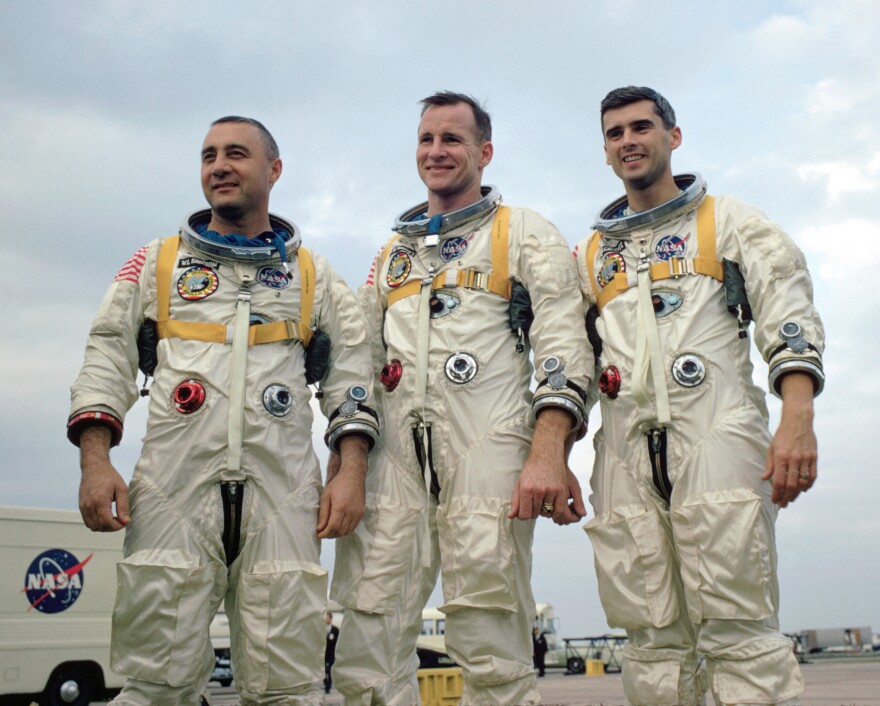Fifty years ago today, the U.S. space program suffered a terrible loss. Three astronauts -- Gus Grissom, Ed White and Roger Chaffee -- died in a fire during a training mission inside the Apollo 1 capsule.
Roger Chaffee grew up in Grand Rapids.
Roger Chaffee’s life began -- and ended -- with a safety emergency.
Shortly before Roger was due to land on planet Earth, his father Don came down with scarlet fever. It was the winter of 1935, and Don’s wife Blanche was due with their second child.
The hospital in Greenville, their hometown, wouldn’t admit the Chaffees for fear of contagion. Neither would the bigger hospital in Grand Rapids.
So the Chaffees moved in with Blanche’s parents in Grand Rapids.
“Roger was born on February 15, 1935, and he was very healthy,” says former NASA historian and Grand Valley State University physics professor Glen Swanson. “Mom came through fine, and Don eventually came through fine as well.”
Swanson grew up in Grand Rapids, a couple of miles from Don and Blanche’s home. He’d sometimes visit them during his high school years.
Roger Bruce Chaffee graduated from Grand Rapids Central High School in 1953. As a Navy pilot, he was assigned to a photo reconnaissance squadron based in Jacksonville, Florida. Chaffee flew 82 missions over Cuba, including a few during the missile crisis of 1962.
Glen Swanson learned that for himself at the Chaffee house one day while staring at a lampshade.
“That lampshade was made up of strips of film from those reconnaissance flights,” Swanson says, laughing. “And so when the lamp was lit up, you’d see these negatives of this base of operations.”
The lampshade might have become a rare artifact of the Cold War. But the story just wasn’t true. Roger Chaffee had flown over Cuba. But the pictures had come from a different Spanish-speaking nation: Spain.
Chaffee applied to NASA in 1962 and was accepted into the astronaut corps the following year.
On January 27, 1967, Chaffee was at NASA Launch Pad 34. He was strapped down inside the brand new Apollo 1 command capsule, along with space veterans Gus Grissom and Ed White. It was a dress rehearsal for their launch into Earth orbit less than a month later.
But something went terribly wrong.
An electrical short sparked a fire near Grissom’s seat. The hatch was jammed. The fire, fed on pure oxygen, raged through the capsule. There was nowhere to go.
Roger Chaffee never made it into space.
His untimely death at age 31 put America’s moon shot into sharper view. The Apollo program was riddled with flaws, and Glen Swanson says the tragedy forced NASA to work harder to fight the right stuff.
“The attention to address them was all brought forth because of the tragedy,” Swanson explains. “So really, Apollo 1, the accident...allowed us to move forward with Apollo 7, 8, and of course eventually landing us on the moon with Apollo 11.”



